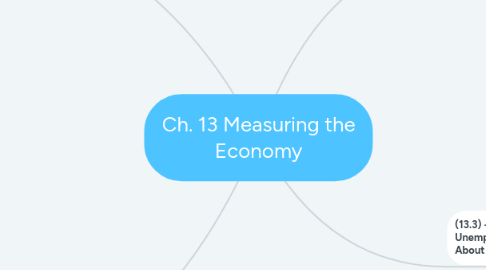
1. (13.4) 4. What Does the Inflation Rate Reveal About an Economy’s Health?
1.1. Runaway inflation can send an economy into a tailspin. That is why economists keep a close eye on a third economic indicator.
1.1.1. inflation rate: the percentage increase in the average price level of goods and services from one month or year to the next
1.2. Economists at the BLS track changes in the cost of living using what is known as the consumer price index.
1.2.1. price index: a measure of the average change in price of a type of good over time
1.3. Consumers pay nominal costs with nominal wages, or wages based on current prices.
1.3.1. consumer price index: (CPI)a measure of price changes in consumer goods and services over time; the CPI shows changes in the cost of living from year to year
1.4. As prices go up, wages generally go up as well. By using the CPI to adjust for inflation, economists can calculate real wages and compare them over time.
1.4.1. cost-of-living index: a measure of change in the overall cost of goods and services another term for the consumer price index
2. (13.5) How Does the Business Cycle Relate to Economic Health?
2.1. Business cycles are irregular in both length and severity. This makes peaks and troughs difficult to predict. Nonetheless, economists attempt to do just that, using a variety of economic indicators.
2.2. Measures that consistently rise or fall several months before an expansion or a contraction begins are called leading economic indicators.
2.2.1. peak: the highest point of an expansion, or period of economic growth; a peak is followed by economic decline
2.3. Coincident economic indicators are measures that consistently rise or fall along with expansions or contractions.
2.3.1. expansion: a period of economic growth
2.4. Business cycles are popularly known as periods of boom and bust. A boom is the expansion phase of the cycle.
2.4.1. business cycle: a recurring pattern of growth and decline in economic activity over time.
3. (13.2) How Do Economists Measure the Size of an Economy?
3.1. they study decisions made by individuals and firms (micro).
3.1.1. gross domestic product: the market value of all final goods and services produced within a country during a given period of time
3.2. They study decisions made by the economy in whole (macro).
3.2.1. market value: the price buyers are willing to pay for a good or service in a competitive market
3.3. The main measure of the size of a nation's economy is its gross domestic product.
3.3.1. final good: any new good that is ready for consumer use; final goods are included in the calculation of GDP
3.4. GDP is an economic indicator that measures a country's total economic output.
4. (13.3) -What Does the Unemployment Rate Tell Us About an Economy’s Health?
4.1. A high unemployment rate means the overall health of the economy is poor.
4.1.1. unemployment rate: the percentage of the labor force that is not employed but is actively seeking work
4.2. When people quit their jobs it could potentially be better because they are moving forward. (frictional unemployment)
4.2.1. frictional unemployment: a type of unemployment that results when workers are seeking their first job or have left one job and are seeking another
4.3. when the unemployment rate is high it inst good for the economy but it is good because it opens up new positions for other people
4.3.1. structural unemployment: a type of unemployment that results when the demand for certain skills declines, often because of changes in technology or increased foreign competition

